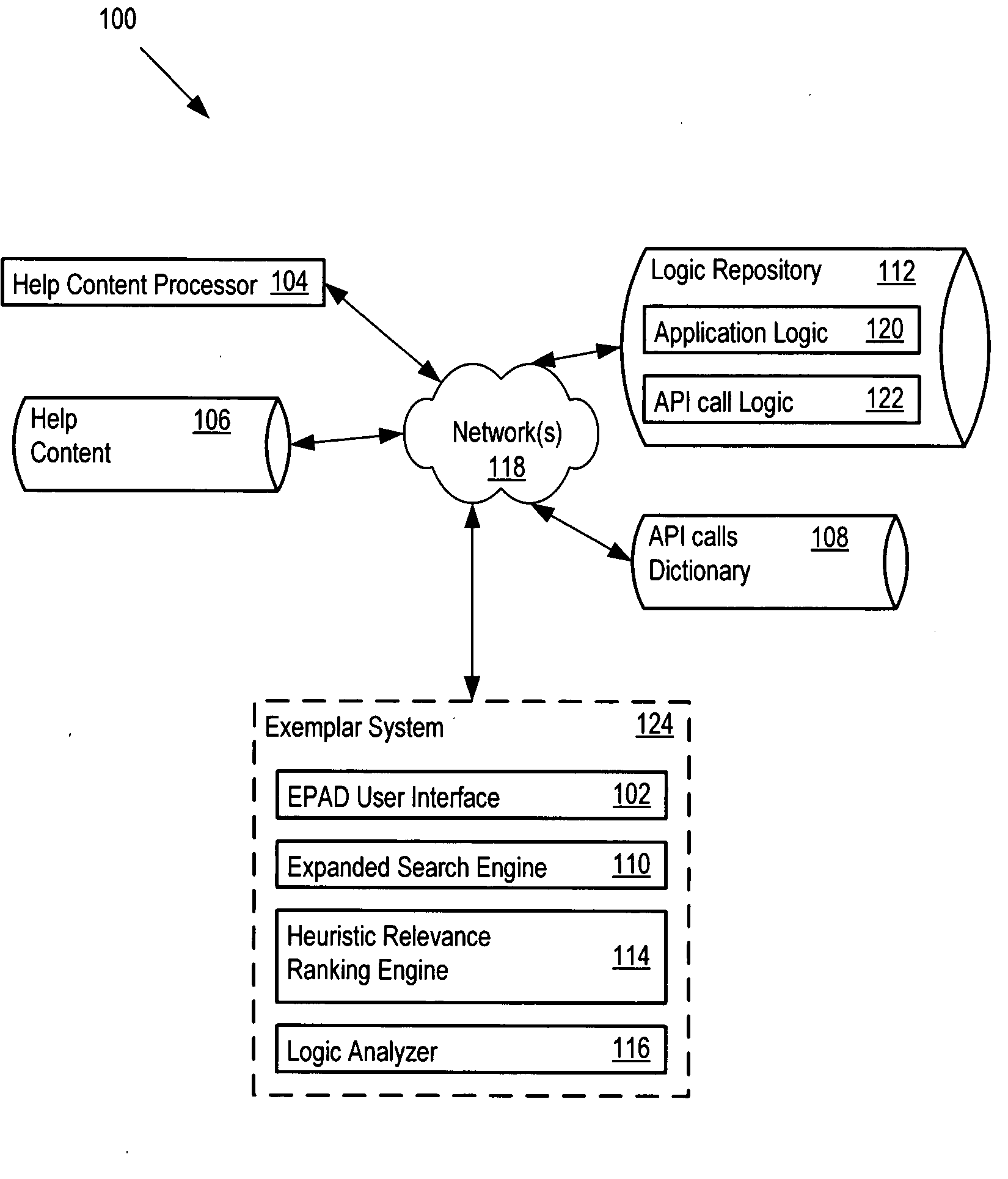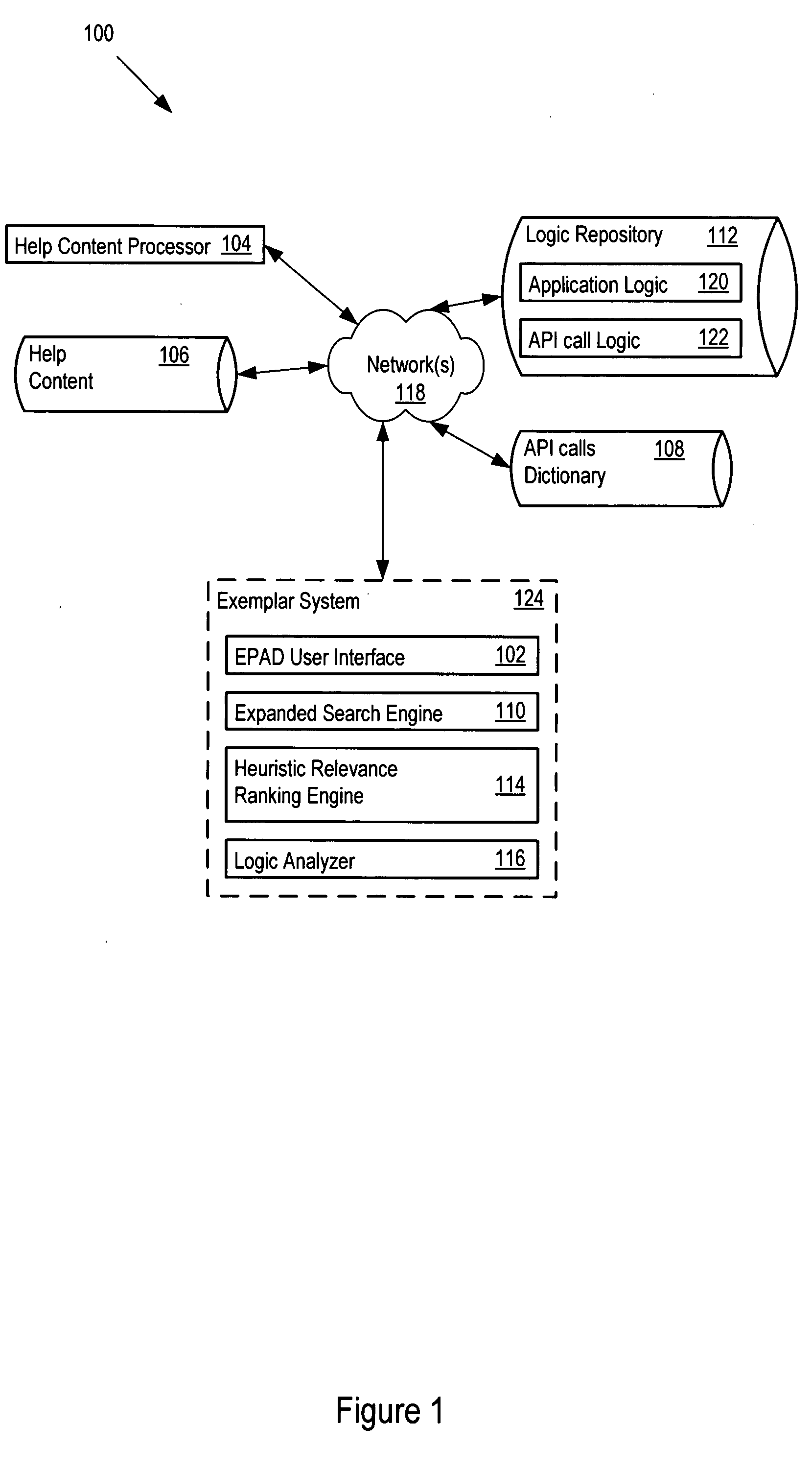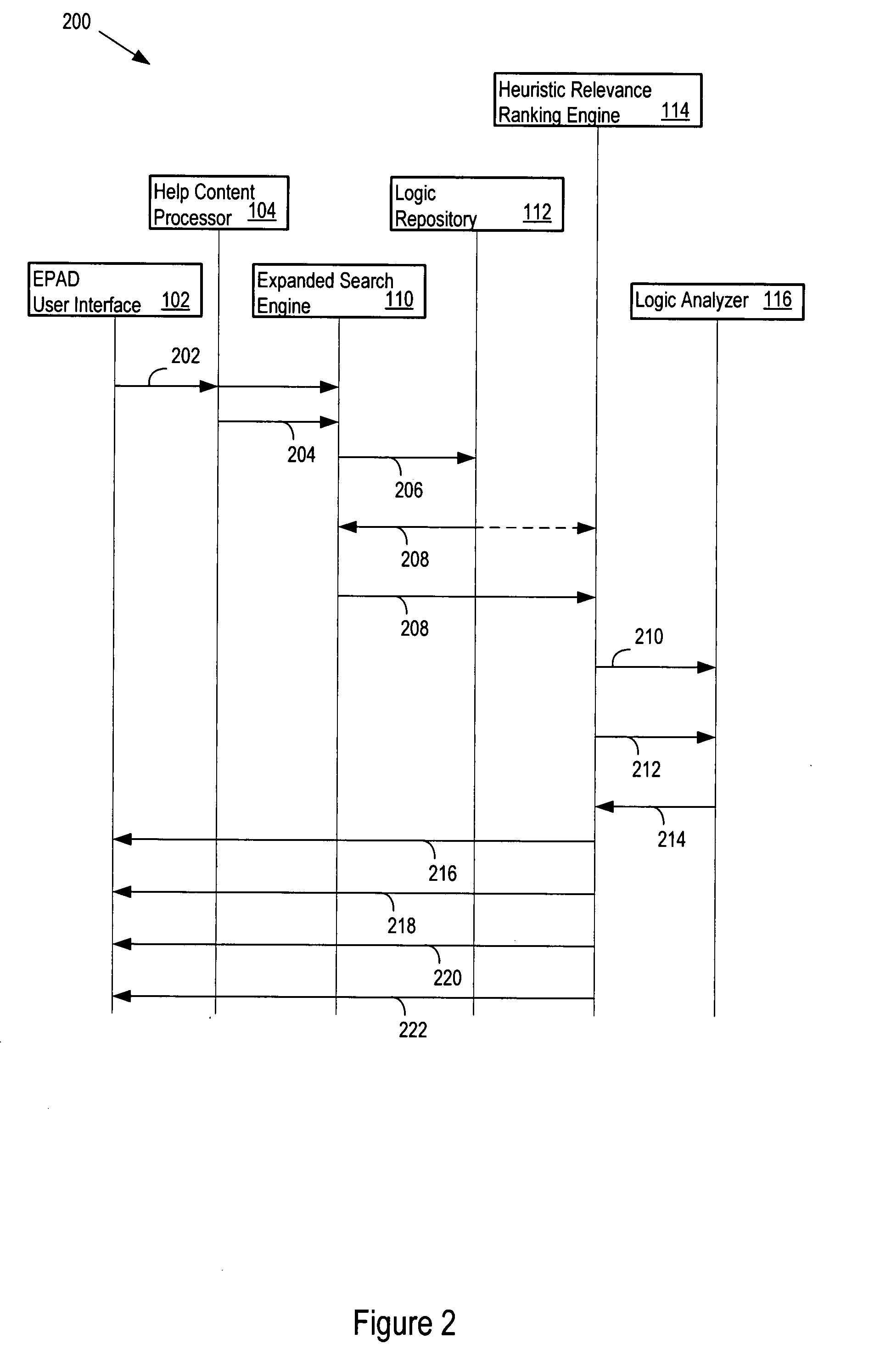Application search tool for rapid prototyping and development of new applications
a technology for rapid prototyping and new applications, applied in the direction of source code generation, instruments, computing, etc., can solve the problems of increasing the cost of building prototypes repeatedly without reusing existing application logic, and unable to retrieve highly relevant software components from application repositories, etc., to achieve rapid and efficient identification of highly relevant applications
- Summary
- Abstract
- Description
- Claims
- Application Information
AI Technical Summary
Benefits of technology
Problems solved by technology
Method used
Image
Examples
Embodiment Construction
[0028]The EXEcutable exaMPLes ARchive system (Exemplar) solves the technical problem of providing a tool that accepts high-level processing concepts as queries to identify, determine the behavior, rank and return the application logic of HRAs. Exemplar solves an instance of the difficult vocabulary problem that exists when users and developers describe processing concept with different words. Exemplar is not limited to basic keyword matching used in queries against application descriptions and comments included with application logic. Accordingly, when an application is highly relevant, and where a query contains keywords different from the words used by the developer to describe application logic and API call logic, Exemplar nevertheless returns the application as a highly relevant application.
[0029]Exemplar matches high-level processing concepts (e.g., expressed using keywords) with the descriptions of various API calls found in help documents or other trusted descriptive sources....
PUM
 Login to View More
Login to View More Abstract
Description
Claims
Application Information
 Login to View More
Login to View More - R&D
- Intellectual Property
- Life Sciences
- Materials
- Tech Scout
- Unparalleled Data Quality
- Higher Quality Content
- 60% Fewer Hallucinations
Browse by: Latest US Patents, China's latest patents, Technical Efficacy Thesaurus, Application Domain, Technology Topic, Popular Technical Reports.
© 2025 PatSnap. All rights reserved.Legal|Privacy policy|Modern Slavery Act Transparency Statement|Sitemap|About US| Contact US: help@patsnap.com



